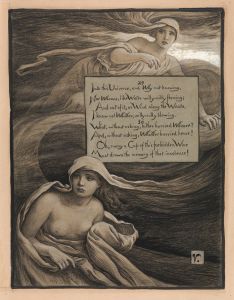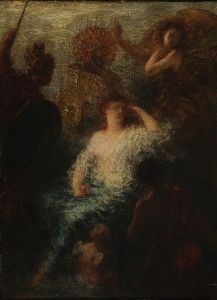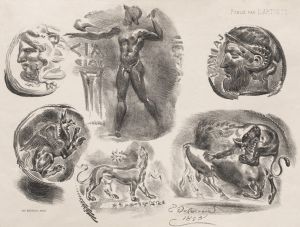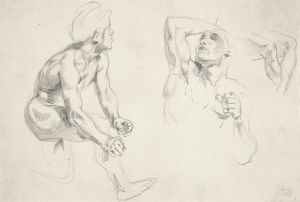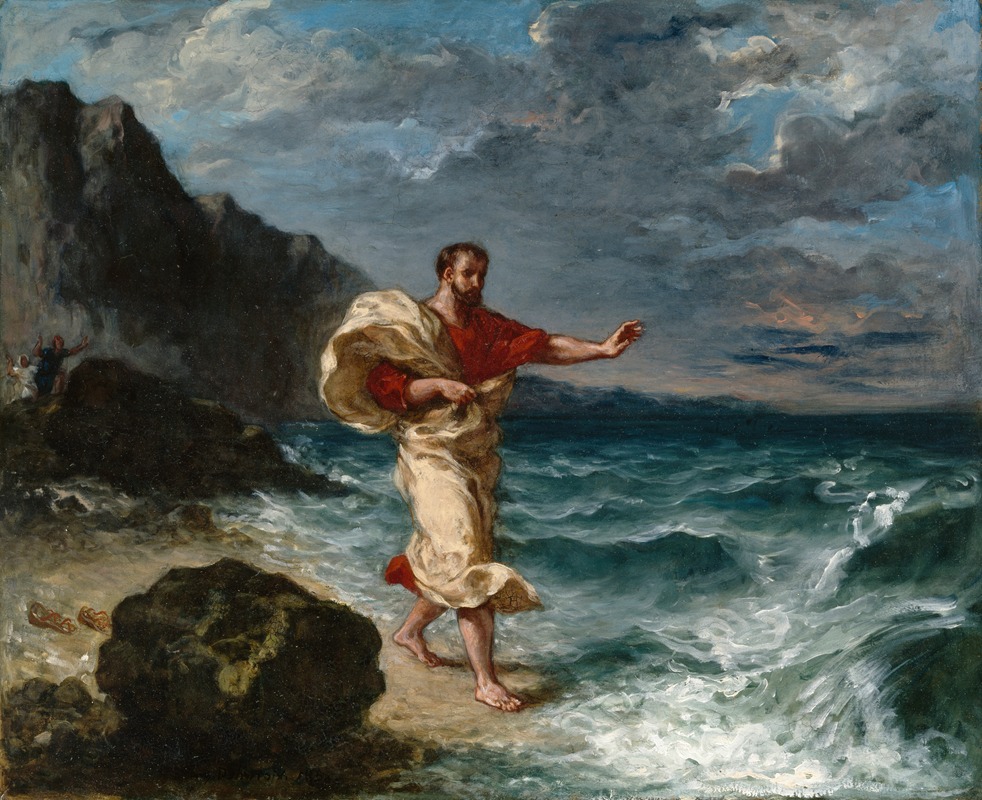
Demosthenes on the Seashore
A hand-painted replica of Eugène Delacroix’s masterpiece Demosthenes on the Seashore, meticulously crafted by professional artists to capture the true essence of the original. Each piece is created with museum-quality canvas and rare mineral pigments, carefully painted by experienced artists with delicate brushstrokes and rich, layered colors to perfectly recreate the texture of the original artwork. Unlike machine-printed reproductions, this hand-painted version brings the painting to life, infused with the artist’s emotions and skill in every stroke. Whether for personal collection or home decoration, it instantly elevates the artistic atmosphere of any space.
Eugène Delacroix, a leading figure of the French Romantic movement, is renowned for his dynamic compositions and vibrant use of color. Among his extensive body of work is the painting "Demosthenes on the Seashore." This artwork, like many of Delacroix's pieces, reflects his fascination with historical and literary themes, although specific details about this particular painting are relatively scarce compared to some of his more famous works.
Delacroix was born on April 26, 1798, in Charenton-Saint-Maurice, France, and he became a central figure in the Romantic movement, which emphasized emotion and individualism as well as the glorification of the past and nature. His works often drew inspiration from literature, history, and exotic subjects, which he encountered during his travels, particularly his journey to North Africa in 1832.
"Demosthenes on the Seashore" depicts the ancient Greek statesman and orator Demosthenes, who lived from 384 to 322 BC. Demosthenes is remembered for his powerful speeches and his efforts to oppose the expansion of Macedonian influence over Greece under Philip II and later Alexander the Great. The painting captures a moment of introspection or solitude, with Demosthenes positioned by the sea, possibly reflecting on his political struggles or preparing for his orations.
Delacroix's choice of Demosthenes as a subject aligns with his interest in dramatic historical figures who embodied the Romantic ideals of heroism and resistance. The seashore setting may symbolize the boundary between the known and the unknown, a place of contemplation and transition, which is a recurring theme in Romantic art.
The painting is characterized by Delacroix's signature style, which includes expressive brushwork and a rich color palette. His technique often involved layering colors to create depth and movement, a method that contributed to the emotional intensity of his works. Although "Demosthenes on the Seashore" is not as widely discussed as some of Delacroix's other masterpieces, such as "Liberty Leading the People" or "The Death of Sardanapalus," it nonetheless exemplifies his ability to convey complex emotions and narratives through his art.
Delacroix's influence extended beyond his lifetime, impacting future generations of artists, including the Impressionists, who admired his use of color and expressive techniques. His works continue to be studied for their innovative approach to composition and their embodiment of the Romantic spirit.
In summary, "Demosthenes on the Seashore" is a testament to Eugène Delacroix's skill in capturing the essence of historical figures and imbuing them with a sense of drama and introspection. While specific details about the painting's creation and history are limited, it remains a part of Delacroix's legacy as a master of Romantic art.





